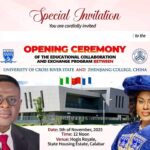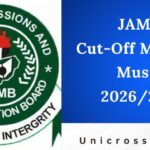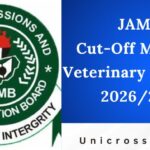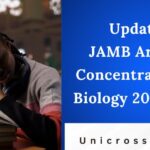Preparing for the Joint Admissions and Matriculation Board (JAMB) Unified Tertiary Matriculation Examination (UTME) is a crucial step for aspiring art students in Nigeria. The 2026/2027 session emphasizes focused study on key areas that align with university-level expectations in visual arts, design, and cultural appreciation. The areas of concentration, drawn directly from the official JAMB syllabus, highlight the most frequently tested topics. These include historical developments in art, practical techniques, materials, and critical analysis. By prioritizing these, candidates can streamline their preparation, avoid irrelevant reading, and boost their chances of scoring 250 marks or higher.
The JAMB Art syllabus aims to equip candidates with foundational knowledge for careers in fine arts, graphic design, architecture, and cultural studies. It tests not just memorization but also creativity, observation, and cultural awareness. For the 2026/2027 exam, expect questions on Nigerian and global art traditions, with a slight emphasis on contemporary African influences due to recent syllabus updates. The exam format remains computer-based, with 50 objective questions in 40 minutes, covering theory and practical appreciation.
This guide provides a detailed breakdown of the primary areas of concentration. Focus on these to cover about 80 percent of potential questions. Study recommended texts like “A History of Art in Africa” by Bacon and “Nigerian Art” by Eyo for depth. Practice sketching and analyzing artworks daily to build confidence.
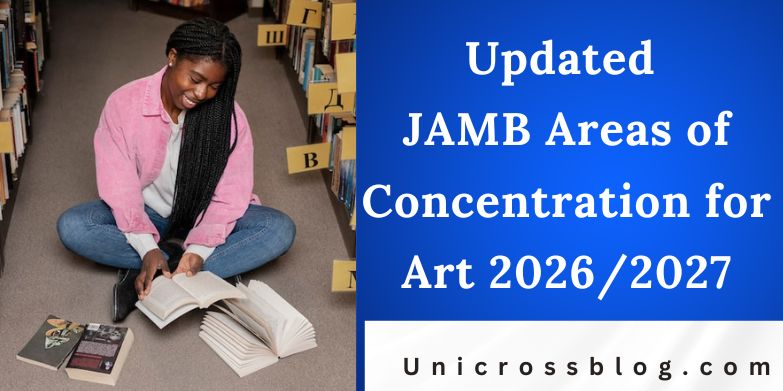
JAMB Areas of Concentration for Art
1. Art as a Visualizing Medium
This foundational area explores how art communicates ideas through visual elements. Concentrate on the principles of design: line, shape, form, space, texture, color, and value. Understand their application in two-dimensional (2D) and three-dimensional (3D) works. Key subtopics include balance (symmetrical vs. asymmetrical), rhythm, emphasis, proportion, and unity. For example, analyze how artists like Picasso used distortion for emphasis in Cubism.
Candidates should practice identifying these elements in famous artworks, such as Benin’s bronze plaques or Ife’s terracotta heads. Questions may ask you to differentiate between organic and geometric shapes or explain how color harmony evokes mood. Dedicate time to sketching simple compositions to internalize these concepts.
2. Art Media and Techniques
Mastery of materials and methods is core to this section. Focus on traditional and modern media: drawing tools (pencils, charcoal, ink), painting (watercolor, acrylic, oil), sculpture (clay, wood, metal), printmaking (relief, intaglio), and textiles (batik, adire). Learn preparation techniques, like tempering clay or etching plates, and maintenance practices, such as varnishing paintings or restoring sculptures.
Emphasize safety protocols, like handling solvents in oil painting or firing kilns for ceramics. Subtopics include mixing pigments, layering techniques, and tool calibration. For Nigerian context, study Yoruba beadwork or Igbo uli body art. Exam questions often test practical knowledge, like the steps in linocut printing or the effects of glazing in pottery. Experiment with affordable materials at home to reinforce learning.
3. Historical Dimensions of Art
This is a high-yield area, covering art evolution from prehistoric times to modern eras. Prioritize Egyptian art (pyramids, hieroglyphs, funerary sculptures), Greek and Roman influences (classical sculptures, mosaics), and Renaissance masterpieces (Leonardo da Vinci’s works). In African art, concentrate on Nok terracottas (500 BC), Benin bronzes, and Ife heads, highlighting their socio-cultural roles.
For global history, study Impressionism (Monet), Expressionism (Munch), and Cubism (Braque). Nigerian modern art features prominently: focus on pioneers like Bruce Onobrakpeya’s prints and Romuald Hazoume’s installations. Understand patronage systems, like royal commissions in Benin, and colonialism’s impact on art. Questions may require timelines or comparisons, such as Egyptian vs. Nok figurative styles. Create a chronological chart to memorize eras.
4. Art Entrepreneurship
An emerging focus for 2026/2027, this area links creativity to business. Concentrate on marketing artworks (galleries, online platforms), pricing strategies (cost-plus vs. market-based), and intellectual property (copyrighting designs). Learn about art fairs, commissions, and studio management. Subtopics include funding sources (grants, loans) and ethical issues like cultural appropriation.
In Nigeria, study the role of markets like Alaba in Lagos for crafts. Questions might ask about SWOT analysis for an art business or the impact of digital NFTs on sales. Read case studies of successful artists like El Anatsui to grasp real-world applications. This section tests practical viability, so role-play pitching an artwork.
5. Nigerian Art and Culture
Deep dive into indigenous and contemporary Nigerian expressions. Focus on ethnic diversity: Hausa leatherworks, Igbo masks (Ekpe society), Yoruba gelede masks, and Tiv pottery. Explore themes like spirituality (ancestor worship in sculptures) and social commentary (Ulli Beier’s poetry-inspired visuals). Modern developments include the Zaria Art Society’s natural synthesis and contemporary street art in Abuja.
Subtopics cover festivals (Argungu, Osun-Osogbo) and crafts (Aso-oke weaving). Understand globalization’s influence, like fusion in Romuald Hazoume’s bottle-cap masks. Exam questions often compare traditional vs. modern, such as wood carving evolution. Visit local museums virtually or sketch cultural motifs to connect theory with practice.
6. Tools, Equipment, and Processes
This technical area covers workshop essentials. Concentrate on hand tools (chisels, brushes, looms), power tools (drills, kilns), and safety gear (masks, gloves). Learn calibration (sharpening blades) and maintenance (cleaning palettes). Processes include casting (lost-wax for bronzes), modeling (additive/subtractive), and assembling collages.
For Nigerian relevance, study adire dyeing vats or bronze-casting molds. Questions test sequences, like the 10 steps in batik production. Practice basic tool handling to avoid theoretical pitfalls.
7. Art Appreciation and Criticism
Develop critical eyes here. Focus on formal analysis (elements and principles), contextual interpretation (historical/social), and evaluative judgments (aesthetic value). Learn terms like iconography, patronage, and avant-garde. Subtopics include writing critiques and identifying styles (Baroque vs. Minimalist).
Apply to Nigerian works, like critiquing Obiora Udechukwu’s drawings. Questions may ask for strengths/weaknesses in a described piece. Read art reviews to sharpen vocabulary.
8. Design Fundamentals
Emphasize 2D/3D design: lettering (serif vs. sans-serif), patterns (repeating motifs), and motifs (symbolic icons). Study typography, layout in posters, and ergonomics in product design. Nigerian examples: Nsibidi symbols or Ankara patterns. Practice creating thumbnails for ads.
9. Crafts and Textiles
Concentrate on weaving (loom types), dyeing (tie-and-dye), and embroidery. Focus on cultural significance, like adire in Yoruba identity. Techniques: resist methods, applique. Questions on material properties, like cotton vs. silk durability.
10. Sculpture and Ceramics
Key techniques: carving (direct/indirect), modeling, firing (bisque/glaze). Nigerian focus: Esie soapstone figures. Understand armatures and patinas.
11. Painting and Drawing
Media: fresco, tempera, impasto. Styles: realism to abstraction. Practice observational drawing.
12. Printmaking and Graphics
Relief (woodcut), etching, lithography. Digital integration in modern graphics.
13. General Art History and Global Influences
Broader survey: Asian (Chinese porcelain), Islamic (calligraphy), and Oceanic arts. Compare with African minimalism.
By concentrating on these areas, allocate study time proportionally: 30 percent history, 25 percent techniques, 20 percent Nigerian culture, 15 percent appreciation, 10 percent entrepreneurship. Use past questions from 2020-2025 to simulate exams. Join study groups for peer critiques. Consistent revision over six months yields results. Stay motivated; art is about expression as much as academics.
READ ALSO: Updated JAMB Areas of Concentration for Agricultural Science 2026/2027
FAQs
What is the main difference between JAMB Art syllabus and areas of concentration?
The syllabus is the full document with all topics and objectives, while areas of concentration highlight high-probability exam topics for efficient study.
How many questions come from Nigerian art in the 2026/2027 exam?
Typically 10-15 out of 50, emphasizing cultural relevance.
Can I use digital tools for preparation?
Yes, apps like Procreate for sketching or online museums for virtual tours, but focus on traditional methods too.
What if I miss a section like entrepreneurship?
It accounts for 5-10 percent, but skipping risks low scores; integrate it with practical projects.
Are there practical components in the UTME Art exam?
No, it’s all objective questions, but understanding processes helps answer application-based items.
How do I score high in art appreciation questions?
Practice describing artworks using key terms; analyze at least five pieces weekly.
Is the 2026/2027 syllabus different from 2025?
Minor updates on contemporary African art, but core areas remain consistent.
What textbooks should I prioritize?
“Art: A History of Painting, Sculpture, Architecture” by Janson and Nigerian-specific texts like “The Art of West Africa.”
Can art students choose science subjects? A
No, stick to arts combinations like Literature, CRS, Government for relevance.

